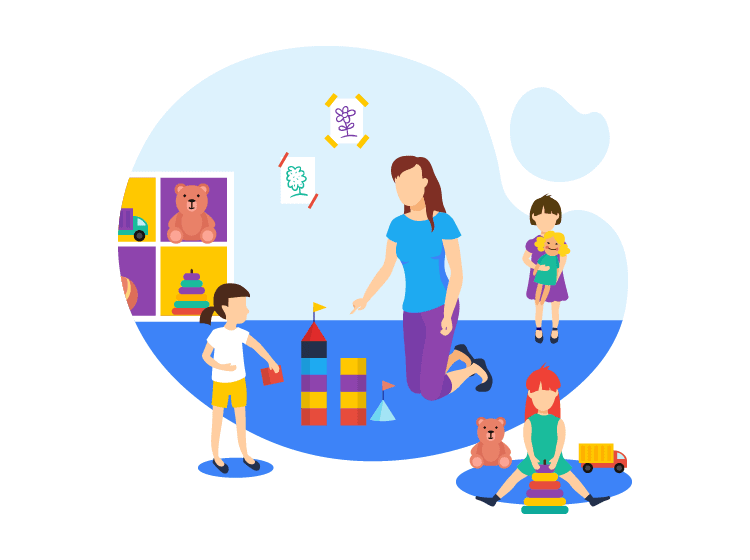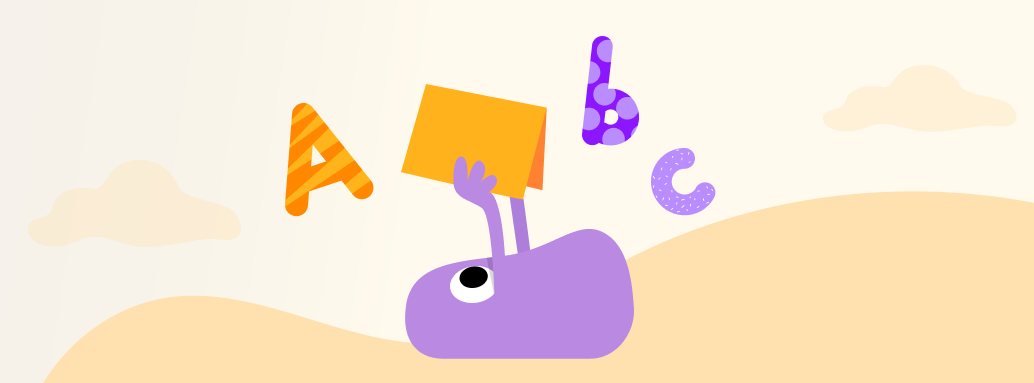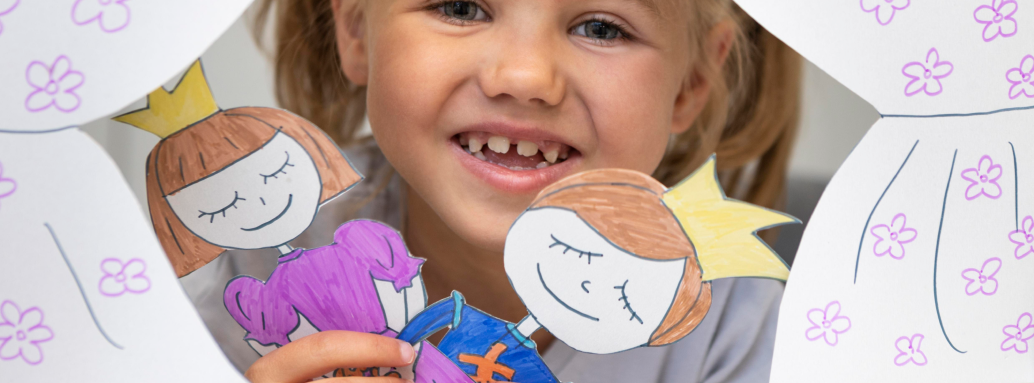Play Dough, Umbrellas, Light Boxes, and Early Learning Frameworks
What is an Early Learning Standard? Early learning and development standards, also called early learning guidelines, are regarded as the milestone of...

Mustafa
March 24, 2021
37 minute read
Early learning and development standards, also called early learning guidelines, are regarded as the milestone of an early childhood development system. Based on scientific research, they provide advisory posts on what children should know and be able to do in different age groups.
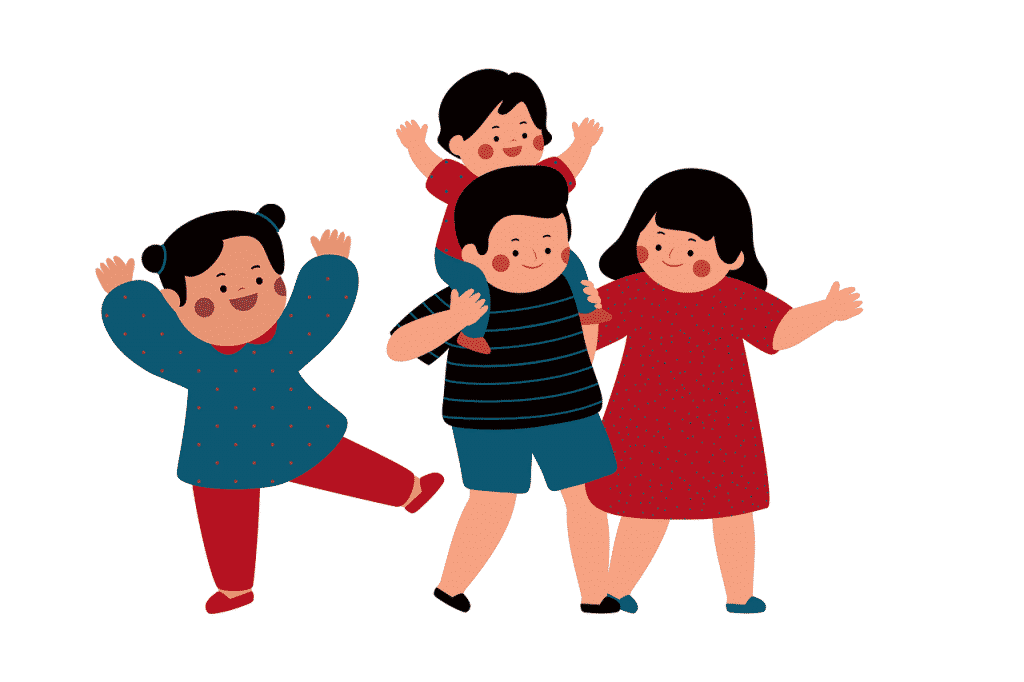
The importance of high-quality early childhood experiences as the foundation for school success and lifelong learning has been demonstrated by research, practice, and public opinion. Plainly said, early experiences matter—whether children are at home, in daycare, preschool, kindergarten, or the primary grades. The forces that shape these early experiences are embedded in families, schools, and communities, and are largely controlled by adults who have a stake in children growing and developing to their fullest potential.
These adult stakeholders come from a variety of backgrounds and need a common understanding of the knowledge, skills, and dispositions that children gain through quality early childhood experiences, regardless of where they spend their waking hours.
The standards promote the understanding of early learning and development, provide a comprehensive and coherent set of early childhood educational expectations for children’s development and learning, and guide the design and implementation of curriculum, assessment, and instructional practices with young children.
The purpose of Infant/Toddler Learning and Development Foundations in CA for example is to describe research and evidence-based expectations for the way most infants and toddlers make progress in the major domains of social-emotional, language, cognitive, and perceptual, and motor development.
By creating a common language to facilitate communication among families, infant care professionals, community members, daycare owners, and policymakers, the foundations build an understanding of the importance of the early years in children’s learning and development.
This publication presents 28 foundations in four domains that describe the competencies that infants and toddlers typically attain in the first three years of life. The descriptions of competencies are enriched with examples of typical behaviors at each age level in each of the four domains as well as behaviors leading up to the attainment of those competencies. This publication is a counterpart to the preschool learning foundations and is a companion to the Infant/Toddler Learning & Development Program Guidelines.
The Early Learning Standards include indicators for infants, toddlers, two-year-olds, preschoolers (3s & 4s), and the exit expectations for children leaving pre-kindergarten and kindergarten. The standards provide parents and teachers with a sense of what children should know and be able to do at various ages and grade levels.
The Early Learning Standards focus on the whole child and include a broad range of domains because young children’s learning and development are interrelated and cross all domains of learning.
The Early Learning Standards acknowledge the essential role of the teacher is intentionally guiding children’s learning and development in a high-quality environment.
The Early Learning Standards recognize that early childhood professionals are key decision-makers in the process of helping young children develop and learn.
The National Association for the Education of Young Children (NAEYC) (2009) provides five guidelines to address this decision-making process:
The curriculum is defined as an educational philosophy for achieving desired educational outcomes through the presentation of an organized scope and sequence of activities with a description and/or inclusion of appropriate instructional materials.
Preschool standards are not a curriculum but are the learning targets for a curriculum. All preschool programs must implement a comprehensive, evidence-based preschool curriculum to meet the preschool standards.
Developmentally appropriate teaching practices scaffold achievement of the preschool standards. Such practice is based on knowledge about how children learn and develop, how children vary in their development, and how best to support children’s learning and development.
It is important to note, therefore, that although the preschool domains are presented as discrete areas in this document, the program must be delivered in an integrated manner through the curriculum’s daily routines, activities, and interactions.
Preschool educational experiences are intended to stimulate, assist, support, and sustain emergent skills. Preschools aim to offer experiences that maximize young children’s learning and development, providing each child with a foundation for current and future school success.
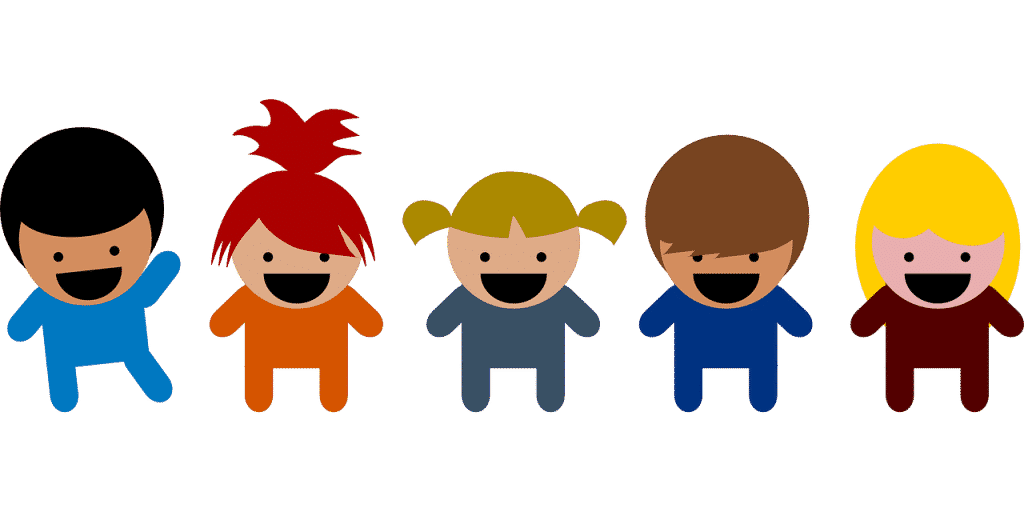
The Early Years Foundation Stage (EYFS) sets the standards that all early years providers must meet to ensure that children learn and develop well and are kept healthy and safe. It promotes teaching and learning to ensure children’s ‘school readiness and gives children a broad range of knowledge and skills that provide the right foundation for good future progress through school and life.
The EYFS specifies requirements for learning and development and for safeguarding children and promoting their welfare. The learning and development requirements cover:
The safeguarding and welfare requirements cover the steps that providers must take to keep children safe, align between the learning framework and your child’s future, and promote their welfare especially in the age of COVID-19.
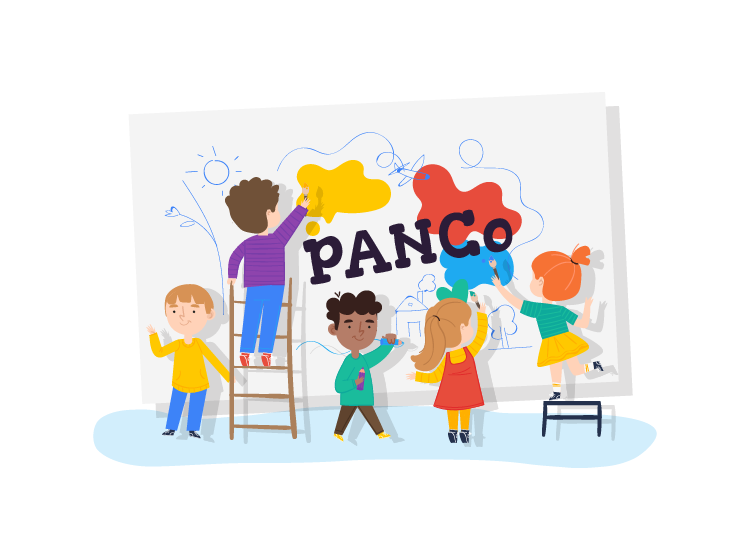
Consequently, a new role called PANCo is being created within the early years’ sector in response to the growing problem of childhood obesity and the increasingly sedentary lifestyles which children lead. Developed by the Cambridge Childhood Partnership, the Physical Activity, and Nutrition Coordinator is responsible for promoting and supporting physical activity and sound nutrition within the setting. They will implement change within the setting to ensure best practices in these areas and will support other practitioners and parents to make healthy choices concerning nutrition and physical activity.
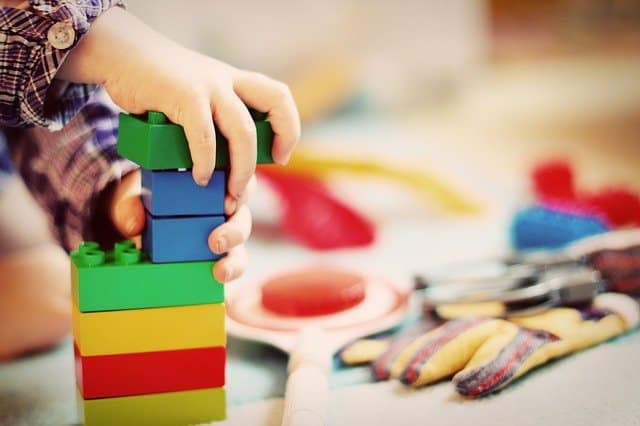
Early learning programs are holistic, responsive, and developmentally appropriate. They focus on the healthy development of the whole child – social, emotional, physical, intellectual, and spiritual development.
Children, family members, and early childhood educators collaborate to enrich children’s learning and growth.
Children and Their Learning Experiences Children engage in open-ended exploration with increasing independence, acknowledge their expanding abilities, and communicate their understandings of the world with confidence and creativity.
Children develop holistically, demonstrating a range of abilities. They grow socially, emotionally, physically, creatively, intellectually, and spiritually through active participation in individual and group activities, selection of materials, and sharing of ideas and interests.
Children and Their Relationships Children relate positively and responsibly with their peers, adults, families, and community members. They acquire a sense of acceptance, self-worth, belonging, generosity and trust through the caring, consistent relationships that emerge in culturally sensitive learning contexts and communities.
Children and Their Environments Children experience healthy, inclusive, and safe settings that enhance their learning and well-being.
Children see themselves reflected in flexible environments that stimulate communication, invite questions, encourage investigation, and promote exploration. That’s why you should use an advanced communication tool for many good reasons, all of which happens for most teachers, principals, and parents benefits from using some sort of automated communication system are intuitively evident.
Children sense that they and their families belong in the setting.
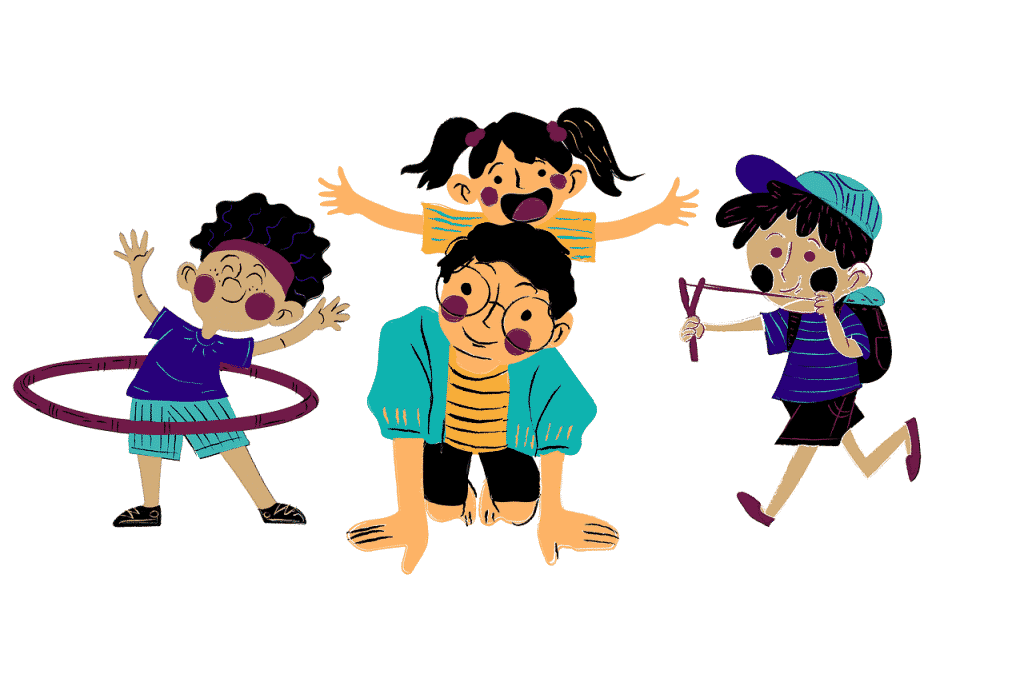
“Parent™ child care software supports the early learning frameworks and child care curriculums, including -but not limited to those government and state-issued early learning and development frameworks listed below.”
The framework is a key component of the National Quality Framework for early childhood education and care. The EYLF was developed by the Australian and state and territory governments with input from the early childhood sector and early childhood academics. It has incorporated feedback from a consultation process, including two national symposiums, national public consultation forums, focus groups, an online forum, and case-study trials.
The framework offers a vision where ‘all children experience learning that is engaging and builds success for life. It has been designed so that early childhood services will be able to develop their own strategies to implement its objectives.
Families looking for more information on the EYLF can use the Information for Families Guide.
Choosing the right Canadian curriculum for a young child can have a big impact on their future academic and personal success.
This document, British Columbia’s Early Learning Framework, is intended to guide and support early childhood educators, Strong Start BC facilitators, early years professionals, service providers, communities, and governments in providing rich early learning experiences for children from birth to kindergarten. The document may also be of interest to families with young children.
Early learning refers to the emerging and expansion of young children’s physical, intellectual, emotional, social, and creative capacities. All children are born with a curiosity about themselves, other people, and the world around them, and in this sense are born learners.
As they grow, they develop both their capacity and dispositions to learn through supportive relationships with their families, with other children and adults in their communities, and with their environments. Early learning is the foundation for lifelong learning, and the basis for individual, social, economic, and environmental well-being.
The framework describes in broad terms a vision, principles, and areas of early learning for British Columbia. It is designed to be put into practice in different ways depending on the circumstances of individual children, families, and communities.
For example, some Aboriginal communities have expressed interest in developing their own culturally specific early learning framework. This document can serve as a starting point for discussion.
The framework recognizes that, while all children should have equal access to rich early learning experiences, no two children are the same. Each brings a wealth of individual, social, cultural, linguistic, and ethnic characteristics to their learning. These differences enrich their own early learning and that of other children.
While influenced by these exemplary documents, this framework is meant to be uniquely British.
With Alberta Early Learning and Child Care Curriculum, the first 6 years of a child’s life are important to their development and future education. Children who are cared for and have positive experiences during their early years are more likely to develop and learn in ways that help them meet their full potential.
Lifelong learning begins the moment we are born. The first 6 years of our lives are a time of unparalleled discovery. We learn about ourselves and the world around us. Our personalities take shape and we begin to lay the foundation of knowledge that will support us as we enter the education system.
Services, supports, and programs for young children and their families are primarily provided by 4 areas of the Government of Alberta: Alberta Education, Alberta Community, and Social Services, Alberta Children’s Services, and Alberta Health.
Alberta Education is responsible for Early Childhood Services (ECS). ECS are educational programs for children under the age of 6 and include Kindergarten, the year before Grade One, and educational programming for children as young as 2 years 8 months.
Alberta Community and Social Services provide Family Support for Children with Disabilities, while Alberta Children’s Services is responsible for Parent Link Centres, Child Care, and licensed nurseries and preschool. This support is provided in partnership with communities through programs offered by Family and Community Support Services.
Alberta Health provides primary and preventative health care from the prenatal stage, through the early years and into adolescence and adulthood.
The 4 ministries work together to plan for and deliver the many early childhood programs, supports, and services needed to support young children and their families.
Manitoba is committed to supporting quality in early learning and child care (ELCC) programs. A key component is this curriculum framework for infant programs, as it supports staff to develop, describe and enhance their curriculum so all infants learn and develop to their fullest potential.
ELCC programs must demonstrate quality and foster the social, emotional, physical, and cognitive development of all children. Developmentally appropriate ELCC practice is child-centered, reflects family and community contexts, and encourages meaningful partnerships between each child, his or her family, and ELCC staff.
Manitoba’s early learning and child care curriculum framework helps staff recognize that the infant curriculum is based on interactions and relationships during caregiving routines, and during exploration and play. It is a companion document to Early Returns: Manitoba’s ELCC Curriculum Framework for Preschool Centers and Nursery Schools.
Together, these two documents recognize the importance of observation and knowledge of children’s developmental capabilities. They will assist you in determining which framework – preschool or infant – is more suitable for the children in your care.
Throughout this document, an infant refers to a child from 12 weeks to two years old. The words “child” and “infant” are used interchangeably. Early Returns are based on current research and best practices. This framework is designed to help you develop your curriculum and write a statement that describes it.
This information can enhance the quality of your program as you:
This document is broken into four sections, as follows:
Throughout Canada and the world, there is a growing recognition of the need to value and support the learning and child care of our youngest children.
The New Brunswick Curriculum Framework for Early Learning and Child Care — English addresses this need by providing the foundation for an emergent and engaging curriculum for children from birth to five, one that will encourage optimum development in an atmosphere of trust, security, and respect.
As such it seeks to:
Suited for home-based and center-based daycare, the framework can be used as a source of information for parents, early childhood educators, and other professionals and paraprofessionals. It is intended to facilitate continuity of learning and care by connecting to diverse home practices, linking with other community-based programs and supports, and complementing the school curriculum.
Educational daycare services have six objectives: welcoming children and meeting their needs, ensuring their health, safety, and well-being, promoting the equality of chances, contributing to their socialization, providing support to their parents, and finally, facilitating their entry into school.
Québec educational program for childcare services for its part, educational program has four objectives: ensuring children high-quality childcare services, serving as a reference tool for individuals working in a childcare setting, fostering greater consistency between these various settings, and finally, promoting the continuity of all the interventions made with families and with young children.
A high-quality nursery establishment is capable of recognizing the needs of children and meeting them. It is also an establishment that intervenes with children by taking into account their level of development.
Moreover, it is one or more adults who team up with the parents of the children attending the daycare establishment.
There are four main dimensions of a high-quality childcare establishment:
This educational program begins by defining the foundations, principles, and values underlying the actions and interventions of Québec’s educational childcare establishments, gives them meaning, and ensures their quality. It goes on to establish guidelines to support educational nurseries establishments in putting in place optimal living and development conditions that will be offered to children attending these establishments.
Check out Parent childcare app and streamlined communication and collaboration between parents and carers, accessible from anywhere in Canada. Manage your child's care with ease. Join now
The National Qualifications Framework sets out the Critical Outcomes which are designed for all educational programs in South Africa. The NCF reflects these. They are that young children should learn to…
Each of these Critical Outcomes is integrated into each of the six Early Learning and Development Areas.
Alabama’s Early Learning Guidelines are presented as a guide of building blocks that are important to support early childcare and to educate providers in preparing each child for future success in school and life.
The guidelines are intended to be inclusive of all children.
The guidelines do not contain a comprehensive list of every skill, knowledge, or development for ages birth through age five.
They are only a guide. Research on early brain development underscores the need to focus on the early years to improve children’s self-concept/emotional, social, language, physical, and cognitive development.
The ages between birth and five are critical to child development, and these guidelines are developed along a continuum that embraces all ages within that span, with appropriate consideration for unique characteristics of development at each age.
Children must receive appropriate nurturing and education within and outside their families from birth onward if they are to develop optimally.
The Alaska Early Childhood Coordinating Council (AECCC) promotes positive development, improved health outcomes, and school readiness for children prenatal through age eight by creating a culturally responsive, comprehensive, and accessible service delivery system that links service providers, empowers families and engages communities.
The AECCC shall support the creation of a unified, sustainable system of early care, health, education, and family support for young children and their families.
Arizona’s Infant and Toddler Developmental Guidelines are part of a continuum of early learning guidelines which provide a framework for understanding and communicating a common set of developmentally appropriate expectations for young children, presented within a context of shared responsibility and accountability for helping young children meet these expectations. Specifically, these guidelines will describe expectations about what infants and toddlers should know (understand) and do (competencies and skills) across multiple domains of development during specific age ranges, as well as what adults can do to support children’s optimal learning and development. The document was developed with three goals in mind:
The Arkansas Child Development and Early Learning Standards provide a set of common expectations for what children typically know, understand, and can do at different ages in early childhood.
The standards are research-based culturally and linguistically appropriate, comprehensive, and are written with the understanding that children reach developmental milestones at different times.
The standards are to be used to assist in developing age-appropriate learning goals for children, to support the developmentally appropriate curriculum and assessment, and to outline a progression of development and learning that supports success in school and life.
The purpose of the California Infant/Toddler Learning and Development Foundations is to describe research and evidence-based expectations for the way most infants and toddlers make progress in the major domains of social-emotional, language, cognitive, and perceptual and motor development.
By creating a common language to facilitate communication among families, infant care professionals, community members, and policymakers, the foundations build an understanding of the importance of the early years in children’s learning and development.
The Colorado Early Learning and Development Guidelines (Guidelines) describe the trajectory of children’s learning and development from birth to 8 years old in Colorado.
They include a broad description of children’s growth to ensure a holistic approach to creating positive early childhood environments. For each age level, this document addresses approaches to learning, health and physical development, social and emotional development, language, literacy, numeracy, logic and reasoning, and other subject-specific learning.
Although the specific domains used to organize descriptions of children’s development evolve within the Guidelines to reflect the specific requirements of each age group, they maintain a broad view of the whole child and describe all aspects of children’s growth.
In addition, over 100 state and national experts participated in some way during the development process, helping to ensure a strong and comprehensive set of Early Learning Standards for Connecticut.
All children are learners. Children learn through play. Every child is unique and is accepted for his/her differences in development, culture, home environment, and learning style.
Parents/families are the child’s first teachers—they play a key role in preparing children for success in school through being involved in their child’s education from birth.
Quality early learning experiences are essential to prepare a child for success in school. The learning opportunities provided need to be developmentally appropriate for all children. A developmentally appropriate learning environment supports learning and development.
It takes partnerships among families, early care and education professionals, schools, health care providers, and other community resources to promote children’s development and school success.
Florida’s Early Learning and Developmental Standards are organized into five domains or areas of development. These domains include the following:
Each domain is divided into sub-domains that focus on specific areas. The Standards themselves are found within those sub-domains. The Standards can be used in multiple ways by a variety of audiences. This includes the following:
Families, caregivers, and early educators all work together to help children grow and learn. This guidance is intended to be a resource for educators to support and enhance children’s learning and development while using the Foundations, Indiana’s Early Learning Development Framework.
While this is not an exhaustive list, this guide is meant to serve as a suggestion for practice from birth to age five including the transition into kindergarten. It can be used to support a child’s development at different levels of learning and promotes fluid movement between developmental stages.
The Foundations are not intended to be a curriculum, but what children should know and be able to do throughout developmental stages. Curricula is content that children should learn and methods to teach the content whereas lesson plans are intended to demonstrate how the content is conveyed to children.
This guidance is a resource for educators to use while developing an intentional lesson plan.
The Idaho Early learning guidelines conform with national models by organizing early childhood development into 5 key areas:
Development is holistic for the small child and all domains are interrelated. Recent brain development research emphasizes the importance of strong primary relationships and social-emotional development, the sense of self as a competent learner, the ability to self-regulate, and the foundational aspects of brain development included in Approaches to Learning as critical to future educational success.
Idaho has developed a comprehensive research-based foundational document for our Early Learning eGuidelines (ELeGs) that provides a common language and framework for discussing and describing young children’s typical growth. The ELeGs are used to guide policy, pre-service and in-service development, and best practices at all levels of early childhood.
These eGuidelines have been adopted as Idaho’s Early Learning Standards for Idaho’s Special Education Preschool Programs. In addition, they are carefully aligned with Head Start/Early Head Start School Readiness Goals and the Head Start Early Learning Framework. The ELeGs offer guidance on child development from birth to kindergarten for schools, Head Start Programs, parents, child care providers, and professional development organizations. In addition, the eGuidelines expand and support the K-12 Idaho Core Standards by addressing early social and emotional development and approaches to learning and cognitive development through the primary grades.
These address key developmental issues that are necessary for successful learning and are used extensively by our early special educators in the development of Individual Education Plans (IEPs).
The Illinois Early Learning and Development Standards (IELDS) provide reasonable expectations for children’s growth, development, and learning in the preschool years. When used as part of the curriculum, the IELDS guides teachers in early childhood programs to create and sustain developmentally appropriate experiences for young children that will strengthen their intellectual dispositions and support their continuing success as learners and students. The age-appropriate benchmarks in the IELDS enable educators to reflect upon and evaluate the experiences they provide for all preschool children.
The Iowa Quality Preschool Program Standards (IQPPS) represent an essential component of providing young children with early learning experiences that support the foundation for positive child outcomes and success. The implementation of IQPPS and criteria is part of continuous improvement efforts for districts and their community partners and is an ongoing process. Districts must routinely review the preschool program policies, procedures, and data to assure the programs are meeting the IQPPS and criteria. Programs may collect evidence to inform continuous improvement processes. Resources and tools have been developed to support the implementation of IQPPS and criteria and continuous improvement of preschool programs.
The Kansas Early Learning Standards are structured to align with the Kansas College and Career Ready Standards (K-12). These early learning standards are structurally and conceptually different than previous versions. They focus on conceptual knowledge and are moving away from the more familiar skill-based learning. Incorporated into the 2013 standards are higher-level thinking strategies such as analyzing, evaluation and interpretation. The eight domains have remained the same as in previous versions, with the individual items or standards now written to describe large concepts that incorporate foundational skills and knowledge. These Early Learning Standards are based upon research indicating that the acquisition of these skills and knowledge promotes school success by providing the foundation for later learning. The Kansas experts that completed the 2013 revision of the Standards believe that these Kansas Early Learning Standards provide insight into what children can do at different ages that lead to later learning in the academic and non-academic areas taught in the more formal school settings of elementary and secondary schools.
The Kansas Early Learning Standards are structured around domains of learning that include a whole-child perspective. The connection between the foundational concepts and skills described in the Kansas Early Learning Standards, the School Readiness Framework, and the kindergarten through 3rd grade College and Career Ready standards (multiple content areas) is shown below.
In Kentucky, school readiness means that each child enters school ready to engage in and benefit from early learning experiences that best promote the child’s success. Families, early childcare and education providers, school staff, and community partners must work together to provide environments and developmental experiences that promote growth and learning to ensure that all children in Kentucky enter school eager and excited to learn. In developing the above recommendation, the Task Force recognized the five developmental areas for school readiness are:
In addition to the definition of school readiness, the Task Force developed a series of indicators related to the above developmental areas. These readiness indicators provide an overview of the expectations of primary schools for incoming students and guide families and communities on how to prepare children for school.
The Early Learning and Development Standards are intended to be a framework for high-quality, developmentally appropriate early childhood programs and were designed to be used by early childhood educators throughout Louisiana.
The term early childhood educator is intended to encompass all those (e.g., teachers, caregivers, administrators, parents, etc.) who are responsible for the care and education of children from birth to age 5.
These Standards establish a common vision for what the state of Louisiana wants children to learn before they enter kindergarten.
As such, they provide age-appropriate goals for children’s learning and development that can guide teachers, caregivers, and others on what types of experiences and activities children should have during their earliest years.
These Standards and Indicators are intended to be a guide for teaching young children. They are neither a curriculum nor a checklist for assessing children’s development and learning.
Individual areas of the Standards are considered to be equally important and should be integrated into all experiences and activities.
Finally, it is important to remember that while the Standards will help educators determine what is “typical” for children in an age group, they might not always describe a particular child’s development.
When a child’s development and learning does not seem to fit what is included in the Standards continuum under his/her age level, look at the Indicators for younger or older age groups to see if they are a better fit for the child.
The goal is to learn what developmental steps the child is taking now and to meet the individual needs of that child on a daily basis.
Educational research has consistently proven that there is a strong correlation between the quality of early childhood experiences and later academic success. Therefore, it is imperative that Louisiana’s early childhood programs provide children with the foundational experiences needed for them to become successful learners.
The Standards and Indicators provide adults with a guide for the skills they should focus on for children of different ages, and offer some general ideas for the types of experiences that will help children develop the skills and knowledge described in this document.
Maine’s Early Learning and Development Standards (MELDS) replaces the State of Maine Early Childhood Learning Guidelines (MELG), 2005, and serves as a guide for all early childhood educators’ efforts to improve professional practice and programs for young children from the age of three until kindergarten entrance. To read the full report, view the MELDS PDF file.
MELDS outlines the following guiding principles and essential practices:
MELDS also covers school readiness and what children should know and be able to do by kindergarten entry. The standards also cover students with disabilities, English language learners, social and emotional development, organization of a preschool, language literacy, testing, writing skills, and more. To read more about MELDS, view the MELDS PDF file.
The guidelines for healthy child development and childcare were originally compiled in 2004 by a workgroup composed of early childhood professionals, to be compatible with the Maryland Model for School Readiness (MMSR) and the Maryland State Curriculum, making the guidelines an important part of a Birth-Grade 12 learning continuum.
The guidelines also met the expectations of the No Child Left behind Act, the National Association for the Education of Young Children (NAEYC), and the National Association of Early Childhood Specialists in State Departments of Education (NAECS/SDE), which were stated in a joint position paper of November 2002. The Guidelines were updated in 2007.
Early learning guidelines can be a valuable part of a comprehensive high-quality system of services for young children, contributing to young children’s educational experiences and their future success. But these results can be achieved only if the early learning standards
The Massachusetts Early Learning Guidelines for Infants and Toddlers focus on relationships between significant people in the child’s world. The guidelines highlight the importance of interactions with children in a program. The Guidelines are also available in Spanish.
The two major sections of this document, “Early Development and Learning Strands for Infants and Toddlers” and “Quality Program Standards for Infant and Toddler Programs,” can be used both independently and together, but make the most sense when they are consulted as a package.
The early development and learning strands are first in this document so that the focus is where it needs to be, on the children, with anticipated outcomes identified. The statements of the knowledge, skills, and attitudes delineated in the goals in each of the early learning strands that infants and toddlers will begin to develop are followed by examples of experiences and caregiver strategies that will help very young children develop and learn in that area. The program standards define characteristics of early childhood settings that are associated with these results for the youngest children.
When programs display the high-quality standards and caregivers and nurseries managers provide the kinds of experiences and utilize the strategies in the document, the children are more likely to begin to reach the goals we set for their development and learning.
The Early Childhood Indicators of Progress (ECIPs) are Minnesota’s early learning standards. Revised and expanded in 2017, these standards are a framework for a common set of developmentally appropriate expectations for children ages birth to kindergarten, within a context of shared responsibility for helping children meet these expectations. The ECIPs are aligned to the Minnesota Kindergarten Academic Standards.
The Kindergarten Guidelines outlined in this document are built on high-quality research and evidence-based principles. The following principles are required in the learning environment and curriculum in the classroom:
Children need opportunities to engage in the application of the principles being introduced through the curriculum. Therefore, one of the requirements for kindergarten classrooms is that the majority of the instructional delivery be organized around helping children to understand the lesson by connecting to real-world applications that are
meaningful to the children’s own lives.
The Missouri Department of Elementary and Secondary Education along with a broad-based group of individuals, whose backgrounds are representative of the early childhood community in Missouri, developed a set of goals for what most children should know and be able to do by the time they enter kindergarten.
The goals are intended to be used in a variety of early childhood settings by a variety of people: parents, parent educators, child care providers, Head Start and public/private school teachers, etc. They are consistent with current research and recommendations from other state and national initiatives.
MELS provides a structure that frames the amazing developmental process from birth to age 5 as the foundation for children’s success in life and learning. MELS is meant to:
MELS y does not provide a comprehensive or exhaustive list of every skill children might achieve in the rest of years of life.
The Early Learning Guidelines: Nebraska’s Birth to Five Learning and Development Standards (ELGs) document is an exciting resource to assist early childhood professionals and families with information about supporting the learning and development of young children.
The ELGs are based on research and evidence about child development and practices that result in the best outcomes for young children. The document provides information related to seven domains or areas of learning and development:
The Nevada Infant and Toddler Early Learning Guidelines (ELG) have been developed for early childhood professionals as well as parents.
This document was developed so that the adults who are caring for infants and toddlers can have a set of appropriate developmental guidelines that they can refer to for information and resources.
The guidelines can be used as a frame of reference for children but it is important to remember that each child develops differently so the age ranges should be used as suggestions.
The activities that are recommended can be provided by the child’s caregiver or parent to help support the learning.
Infants and toddlers grow and develop rapidly so it is important to mention that different milestones can occur at different times and stages in a child‟s development can change quickly. The use of these guidelines will support the use of best practice approaches in infant and toddler programs.
Early learning guidelines serve as a framework for the incredible process of children’s growth, development, and learning in the early years.
They are designed to provide reasonable expectations for children at different ages so that educators have criteria to refer to as they observe children in action, determine their levels of performance, and plan curricular interventions to help them grow, develop, and learn to their fullest potential.
A joint position statement (2003) of the National Association for the Education of Young Children (NAEYC) and the National Association of Early Childhood Specialists in State Departments of Education (NAECS/SDE) says that early learning standards can be a valuable part of a comprehensive, high-quality system of services for young children.
Knowing about the complex process that is child development will allow you to get to know and appreciate children as the unique individuals they are. In turn, this will support you in making informed decisions about how best to support and promote their development and learning. You will have the information you need to be able to decide how to:
We believe that the NH Early Learning Standards should:
This means, therefore, that we are not seeking a one-to-one correspondence between an early childhood developmental indicator and an elementary school standard, but, instead, are seeking to assure that early childhood and elementary school teachers are attending to the same domains and subject areas.
This document begins with this Introduction, which provides background information on the use of Foundations. Following the Introduction, you will find the Goals and Developmental Indicators, which describe expectations for what children will learn before kindergarten, starting with infancy and covering all ages through kindergarten entry.
A glossary with definitions of key terms that are used throughout Foundations is included at the end of the document. The Goals and Developmental Indicators are divided into five domains:
A task force convened by the Oklahoma Department of Human Services Child Care Services developed the Oklahoma Early Learning Guidelines.
A Review Workgroup was formed in September 2016 and met monthly to revise the Early Learning Guidelines. This was initiated due to comments and suggestions from the field, the 2016 Head Start Performance Standards, and the development of the Oklahoma Academic Standards which has replaced the PASS standards.
Revision Committee members included representatives from the Center for Early Childhood Professional Development, Oklahoma Childcare Resource and Referral Association and its affiliates, Oklahoma Head Start/Early Head Start, Oklahoma State Department of Education, Oklahoma State Department of Health, Oklahoma State Regents for Higher Education, Oklahoma Tribal Childcare Association, day care programs, community colleges, and universities.
Additional resources including other state’s Early Learning Guidelines were also added. This document has been developed to be used by all who touch the lives of Oklahoma’s infants, toddlers, and two-year-olds.
The word ‘teacher’ is used in the guidelines to represent parents, family members, educators, caregivers, program staff, and caring adults who offer instruction, support, and guidance to young children. These guidelines are intended to assist adults at all levels of knowledge and experience regarding what children may know and be able to do.
The purpose is to enhance learning experiences for Oklahoma’s youngest children and help provide a safe, nurturing, and developmentally appropriate environment. The Early Learning Guidelines provide examples of experiences that can be used to build relationships, develop a purposeful play, and guide program development.
They should not be used as a curriculum or assessment. Infants, toddlers, and two-year-olds are born ready to learn, and their capacity to learn is enriched by the teacher and the environment around them. Situations will arise throughout the day that can be considered ‘teachable moments’ or unplanned learning opportunities.
These guidelines will assist parents and teachers in finding new ways to introduce everyday experiences and enhance teachable moments. Each section includes an area that will help the parent and teacher provide learning experiences. When or if materials are needed they may be purchased or homemade.
The Early Learning and Kindergarten Guidelines align and expand on Oregon’s learning and development standards for children ages three through six in five domains:
The Guidelines give early learning professionals and kindergarten teachers a set of common goals and vocabulary for children’s learning and development, while also supporting developmentally appropriate, culturally and linguistically responsive practices.
The Guidelines in English, Spanish, Russian, Vietnamese, and Chinese, as well as a set of supporting resources, can be downloaded at the Early Learning and Kindergarten Guidelines web page.
Early Learning for Every Child Today is a guide to support curriculum and pedagogy in Ontario’s early childhood settings of preschools, including child care centers, kindergarten classrooms, home childcare, nursery schools, Ontario Early Years Centres, and other family support programs and early intervention services.
It is a living document that will continue to evolve as early childhood practitioners working in early childhood settings use it.
Early Learning for Every Child Today complements, rather than replaces, specific curricular and pedagogical approaches, early identification protocols, and regulated requirements now in place in Ontario early childhood settings. It also provides direction for programs that do not have an explicit curriculum or consistent pedagogical approach. It features a continuum of developmental skills and a shared language that will support early childhood practitioners and caregivers as they work together across early childhood settings.
Pennsylvania’s Learning Standards for Early Childhood are research-based according to age and development, and form the foundation for curriculum, assessment, instruction, and intervention within early care and education programs.
The 2009 Infant, Toddler, and Pre-Kindergarten and the 2007 Kindergarten, Grades 1 and 2 Standards were revised to reflect current research-based content and integration and to align with the Pennsylvania Core Standards.
The 2014 Pre-Kindergarten and 2016 Kindergarten, Grade 1 and Grade 2 standards mirror the standards found on the Standards Aligned System (SAS) in the learning domains of English Language Arts, Mathematics, Science (including Environment and Ecology), Social Studies, and Social and Emotional Development. Refinements also have been made to: Partnerships for Learning (Family Engagement); Approaches to Learning Through Play; Creative Thinking and Expression; and Health, Wellness, and Physical Development.
Copies of the Learning Standards for Early Childhood can be purchased open In A New Window (Kindergarten, Grade 1 and 2 available Summer 2016)
Access the Spanish translation of the 2014 Infant/Toddler and Pre-Kindergarten Learning Standards for Early ChildhoodOpens In A New Window.
Early learning is the foundation of Rhode Island’s entire educational system. The Standards will serve several purposes in the state’s early childhood part of that system. First and foremost, these revised standards will guide early child care and education practices, such as curriculum and assessment choices, to ensure children receive every opportunity to make progress in the designated learning domains.
These standards also can support the understanding among caregivers and family members** of key early learning milestones.
Additionally, the standards inform primary grade teachers of the educational trajectory of the state’s youngest learners so that these teachers are even better prepared to serve all children.
The SC-ELS Goals and Developmental Indicators describe expectations for what children will learn, starting with infancy and covering all ages through kindergarten entry. The Goals and Developmental Indicators are divided into six domains:
All six of the domains are essential components in the SCELS because all children develop differently. All domains are equally important and overlap is to be expected. The overlap is needed because children’s development and learning are integrated or interrelated.
A child’s progress in one domain is related to the progress he or she makes in other domains.
For example, as a child interacts with adults (i.e., Social Development), she/he learns new words (i.e., Language Development) that help her/him understand new concepts (i.e., Cognitive Development). Therefore, it is essential that the SCELS address all six domains, and that teachers and caregivers who use the SC-ELS realize that all six domains are related and should not be considered independently from one another.
The goals outlined within the Early Learning Guidelines document for children can be used by teachers, home and center-based child care providers, Head Start staff, childcare, and school administrators, early childhood special educators, librarians, and other professionals who support and promote children’s development and learning. It is, however, important to remember that while the ELG can help determine what is “typical” for children in an age group, what is written for a child’s age may not always describe an individual child’s development.
If a child’s development and learning do not seem to fit with what is included in ELG under his/her age level, look at the younger or older age group to see if there is a better fit for the child. The goal is to learn what developmental steps the child is taking now and to meet the individual needs of that child daily.
The Early Learning Guidelines can also be used as a resource for parents and other family members. Parents can use the Goals and Developmental Indicators to identify appropriate goals for their child to support learning and developing skills to support future success in school.
In addition, the Early Learning Guidelines are intended to be a guide for teaching. They are not a curriculum or checklist that is used to assess children’s development and learning or be a barrier to keep children from entering kindergarten.
They are a resource used to define skills and abilities that support learning experiences provided. Efforts should be made so all children have opportunities for play-based experiences that provide a foundation for kindergarten along with the K-12 system accommodating each child’s transition based upon their unique strengths and challenges upon entering school.
The Tennessee Early Childhood Education Early Learning Developmental Standards, or TN-ELDS, were first developed in 2004 to provide documentation of the continuum of developmental milestones from birth through age five based on the research about the processes, sequences, and long-term consequences of early learning and development.
The standards for 4 year-olds were revised and adopted by the State Board of Education in August 2012. These revised standards provide a direct alignment with the content areas found in Tennessee’s state English language arts and mathematics standards as well as the Tennessee state standards for kindergarten.
The birth-48 months standards were revised in 2013 and adopted by the State Board of Education in January 2014. These revised standards continue to be a resource for educators, child care providers, daycare managers, and families who work with children in this age range.
The research is clear. The first three years of life are the most important. During this period, brain development occurs at a very rapid rate in response to each child’s early experiences.
The quality of these early learning experiences is shaped by two factors: the caregiver with whom the child spends his or her time and the child’s environment.
A caregiver can be an early childhood professional, parent, grandparent, or anyone who has the responsibility of caring for a child’s needs. Caregivers must do everything in their power to ensure that this critical phase of human development is full of healthy, rich, and stimulating experiences because strong brains are created during these years.
The brains of these young children are highly active. In fact, by age three, human brains have accomplished 80 percent of their growth!
The years from birth to three are thought to be the most important years when it comes to human development. The things that a child learns in those first years will be the foundation of lifelong learning. Infants and toddlers are cared for, nurtured, and educated in a variety of settings, including:
Utah’s Early Learning Guidelines for Birth to Three will help families, daycare providers, people in the community, and policymakers to support the best learning and development for young children.
The Vermont Early Learning Standards (VELS) are central to a shared vision of what we want for young children in our state in the years from birth to third grade.
The purpose of this document is to provide early childhood educators a set of minimum standards in literacy, mathematics, science, history and social science, physical and motor skill development, and personal and social development with indicators of success for entering kindergarten that is derived from scientifically-based research.
The standards reflect a consensus of children’s conceptual learning, acquisition of basic knowledge, and participation in meaningful and relevant learning experiences.
Alignment to Virginia’s Kindergarten Standards of Learning (SOL), to Virginia’s Phonological Awareness Literacy Screening (PALS), and the national guide, Teaching Our Youngest, A Guide for Preschool Teachers and Child-Care and Family Providers, produced by the Early Childhood-Head Start Task Force (2002), U.S. Department of Education and U.S. Department of Health and Human Services is evident.
The material is organized for use as a tool for early childhood educators in developing a curriculum and meaningful classroom activities. Each Foundation Block is in box format and is organized to build towards the Virginia Kindergarten Standards of Learning. Following the boxes, are expectation indicators for the Foundation Blocks. Sample teaching activities are included to assist teachers in the planning of meaningful classroom activities. Helpful terms and references to national consensus documents used in the development of this document are cited for clarification and resource purposes.
They offer the adults in children’s lives a “common language” and a way to understand children’s development. They are in harmony with the Head Start and ECEAP standards, the core competencies for early learning professionals and child development professionals, the state’s learning standards and common core standards, and “protective factors” for families.
They also offer easy ways adults can interact with children to foster their growth. The Guidelines can help parents, child care providers, preschool teachers, and kindergarten through 3rd-grade teachers join together to support their children’s growth and learning.
The West Virginia Early Learning Standards are grounded in scientific research of child development, children’s approaches to learning, and effective educational practices. Vital to implementing these standards is the ability to teach using appropriate strategies.
The foremost goal for West Virginia’s children is to be lifelong learners. Young children live in a society where information is constantly changing and the ability to function well in an increasingly global economy is essential.
Children must have the ability to continuously learn. Therefore, children must develop skills that allow them to become competent, independent learners capable of higher intellectual functions. To fulfill this role, teachers of young children must also be lifelong learners, continuously building their professional knowledge and functional competencies based on current research.
The Early Learning Standards Framework is intended to guide practitioners in offering high-quality early education environments and educational experiences that are responsive to individual children and maximize learning and skill development. Using this standards framework, educators can plan high-quality learning experiences designed to promote school readiness skills for all children, including children with disabilities. The framework is not designed as an assessment tool, nor should it be used as a way to delay the entry of eligible children into kindergarten.
The Early Learning Standards Framework is considered an integral part of an inter-related comprehensive curriculum and assessment system as defined by WVDE Policy 2525.
The basis for the development of the WMELS is a set of guiding principles that specify beliefs and values about young children in Wisconsin. The primary principles are as follows:
A more detailed description of the WMELS Guiding Principles is located on page 10 of the Introduction Section.
The Wyoming Early Learning Foundations committee intends to support the efforts of families, child care providers, and programs to work together to secure access and availability of experiences that will ensure that each child in Wyoming can succeed in school and life. This includes supporting families as teachers and as engaged partners in making decisions for the well-being of their children.
1) The family environment is the child’s first classroom, and parents and family members are the first teachers. The preschool teacher’s responsibility is to continue fostering that family engagement and to carry on the learning process at school.
2) In this collaborative effort, we also recognize that no child is “standard” and that our Guiding Principles celebrate the diversity of practitioners in individuals and our communities.
Building a strong foundation for childcare and school success requires early care of the child’s preschool education and development, which requires the best childcare management solution to help your child be “Ready to Grow…Ready to Learn…Ready to Succeed”.
Ideally, families, early childcare and education providers, school staff, and community partners must work together to provide environments and developmental experiences that promote growth and learning to ensure that all children enter school eager and excited to learn.
Parent ApS is a great example of an app that allows you to use digital technology in the right way, raising enthusiastic future leaders while making a difference in the environment.
Early childhood years are a crucial phase in the development of children into mature, responsible, and well-rounded individuals. We noticed the dire state of preschool and childcare management tools in 2014 and immediately set out to change that. By 2015, we had released Parent, an ultra-fast, super-easy, and delightfully feature-rich preschool management app. Parent™ brings efficiency and speed to your childcare management while saving you, the parents, and the children invaluable time.
Currently, Parent™ is a lead childcare management software. Our platform has been embraced by daycare providers across seven countries, supports multiple languages and curriculums. We are committed to creating positive partnerships between parents and their childcare center, allowing you, as educators, to spend more time nurturing each child in your care.
Other Articles
